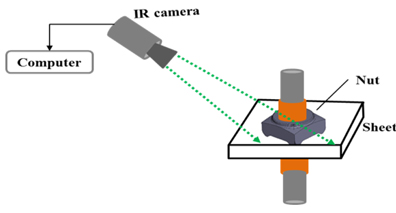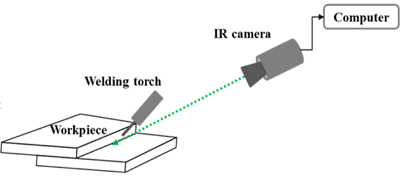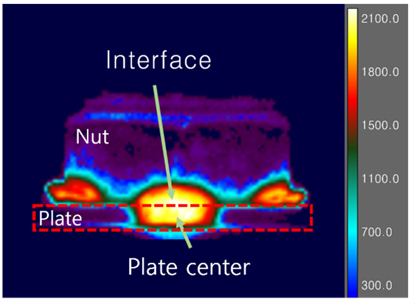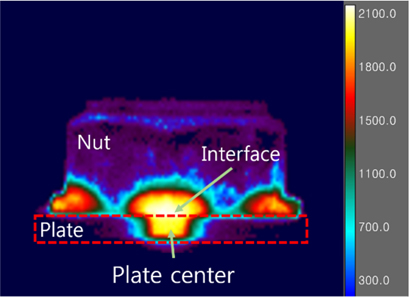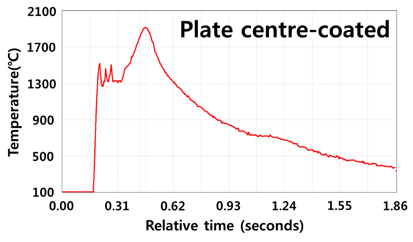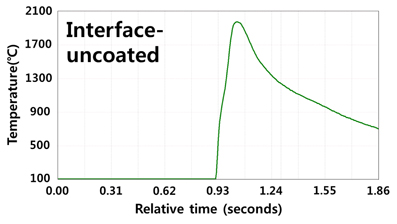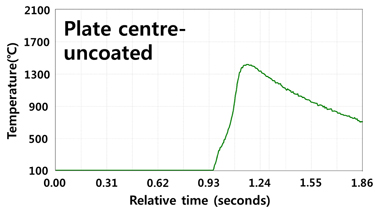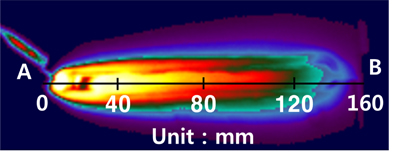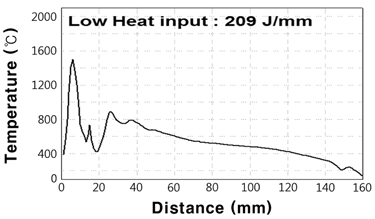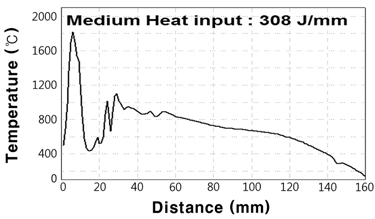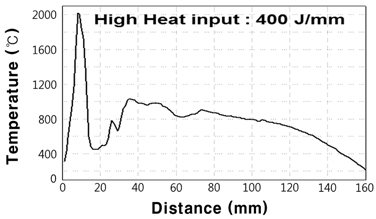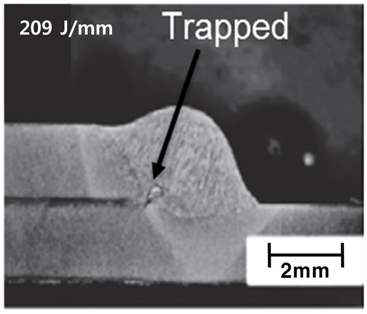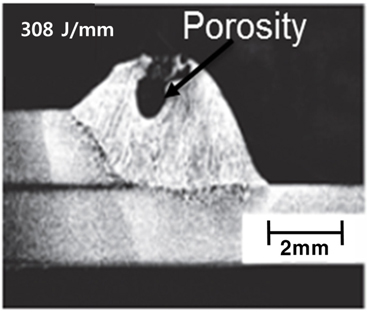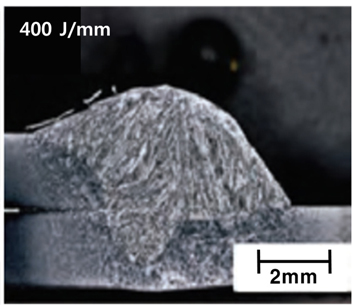A thermography system collects the radiant energy emitted from an object, using a
detector in a non-contact manner, calculates the quantitative physical properties,
and visualizes the heat distribution on the surface of the object through thermal
imaging. In recent times, owing to the rapid development and popularization of infrared
technology, the use of a thermography system has been consistently expanding in various
areas, including military, medical, electrical, and machine defects [1,2].
Welding is a technology to induce a direct bond between solids by applying heat and
pressure to two or more metal materials, and is generally used in steel industries,
such as aviation, ship-building, and automotive.
Hitherto, various welding types have been introduced. Among them, nut projection welding,
a kind of resistance welding, combines materials by providing projections to the nut
to be joined, applying pressure, and generating resistance heat. Cold metal transfer
(CMT) welding increases the surface tension of the weld by allowing the metal transfer
of the welding rod to be performed at a relatively low temperature, and produces little
spatter by maintaining a stable arc even at a low current.
After welding, the strength and stability of the metal material weld junction are
significantly affected by the internal defect of the molten pool that varies depending
on the heat energy applied to the weld junction and the chemical compositions of the
materials. As for the defect of nut projection welding, researchers have investigated
the influence of the nut material on the welding strength and fracture model change
[3]. As for CMT welding, a study on the tensile strength and bead shape characteristics
according to the welding process parameters using a thin-walled aluminum alloy has
been reported [4].
As the temperature of the weld junction typically reaches approximately more than
1,000 °C during welding, temperature measurement by a contact method is impossible.
Therefore, in this study, the heat generated during welding was quantitatively measured
using a thermography system, which is a representative non-contact measuring instrument,
and the defect of the weld junction was analyzed.
As for the welding methods, nut projection welding and CMT welding were selected to
investigate the influence of the factors considered for welding on the strength and
stability of the weld junction. For nut projection welding, coated and uncoated materials
were used to compare the impacts of the chemical factors of the materials. For CMT
welding, the amount of energy input to the unit length was adjusted.
From the experiment, we obtained the maximum temperature, energy distribution, and
fracture strength depending on the coating for nut projection welding. Further, the
defects, such as pores in the molten pool, as well as the tensile strength according
to the input energy were presented for CMT welding.
